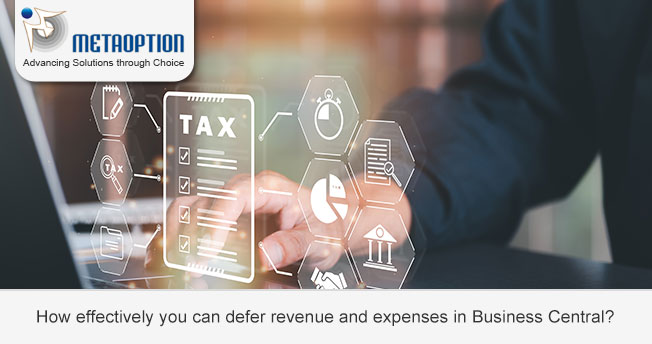Deferrals in accounting refer to the practice of delaying the recognition of revenue and expenses until a later period to ensure proper matching and accurate financial reporting. It allows for a more accurate representation of a business’s financial performance and ensures that revenue and expenses are recorded in the appropriate periods when they are earned or incurred.

Deferrals in Dynamics 365 Business Central allow you to spread revenue and expenses over a specific period rather than recognizing them immediately. This is particularly useful for businesses that offer subscription-based services, prepayments, or long-term contracts.
Managing revenue and expenses deferral in Dynamics 365 Business Central can be achieved through the following steps:
- Set Up Deferral Templates: In Business Central, navigate to the “Deferral Templates” page and create templates that define the deferral rules for revenue and expenses. Specify details such as the deferral start and end dates, recognition method (straight-line, evenly distributed, etc.), and any specific criteria for deferral calculations.
- Apply Deferral Templates to G/L Accounts: Assign the appropriate deferral templates to the relevant general ledger (G/L) accounts. This ensures that revenue and expenses recorded in those accounts follow the defined deferral rules.
- Record Deferrable Transactions: When recording transactions in Business Central, identify the ones that are deferrable (e.g., subscription revenue, prepaid expenses). Make sure to select the appropriate G/L accounts associated with the deferral templates.
- Post the Transactions: Post the transactions in Business Central as usual. The system will automatically defer the revenue or expense based on the rules defined in the assigned deferral templates.
- Review and Adjust Deferrals: Periodically review the deferred revenue and expenses in Business Central to ensure accuracy. Adjustments may be necessary if there are changes in contract terms, service delivery, or other relevant factors.
- Recognize Deferred Revenue and Expenses: During the deferral period, Business Central will automatically recognize a portion of the deferred revenue or expense based on the recognition method defined in the template. This recognition will generate corresponding entries in the appropriate G/L accounts.
By following these steps, you can effectively defer revenue and expenses in Dynamics 365 Business Central. It is important to consult with accounting and finance professionals to ensure that your deferral templates and processes align with the specific requirements and regulations applicable to your business.
For more information and a tailored demonstration contact us today at Metaoption.


